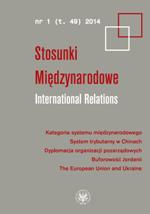Ewolucja podejścia Międzynarodowej Organizacji Pracy do problemu zatrudnienia dzieci
Evolving Approach of the International Labour Organization Towards the Child Labour Problem
Author(s): Dobrosława Wiktor-MachSubject(s): Politics / Political Sciences
Published by: Wydawnictwa Uniwersytetu Warszawskiego
Keywords: Międzynarodowa Organizacja Pracy; praca dzieci ; International Labour Organization; child labour
Summary/Abstract: The end of the Cold War brought the child labour issues in the spotlight. The renewed interest in the problem resulted in numerous research and reports highlighting the scope of child labour around the world. There are over 300 million working children, but the focus of the international community is mostly on „children in child labour” and „children in hazardous work.” The article presents one aspect of the debate – the question of the scope and limits of universalism of standards regulating child labour in the global world. The analysis is based upon the case of the International Labour Organization (ILO) and its changing approach to the problem, which can be characterized as evolving from West-centric towards more inclusive and nuanced stance. The ILO’s Minimum Age Convention no. 138 from 1973 refl ects the ideas of the Western states, who were the founders of the organization, and their willingness to set their rules as the global ones. The Convention is rooted in the urban context of the industrialized world, which only partially resembles the conditions of the developing world. Criticism that followed and the low level of ratifi cations led to another ILO’s document adapted in 1999 – Worst Forms of Child Labour Convention no. 182. To win the global support this convention has set new goals, acceptable for most of the countries, but at the cost of limiting the set of standards.
Journal: Stosunki Międzynarodowe
- Issue Year: 49/2014
- Issue No: 1
- Page Range: 87-101
- Page Count: 15
- Language: Polish

